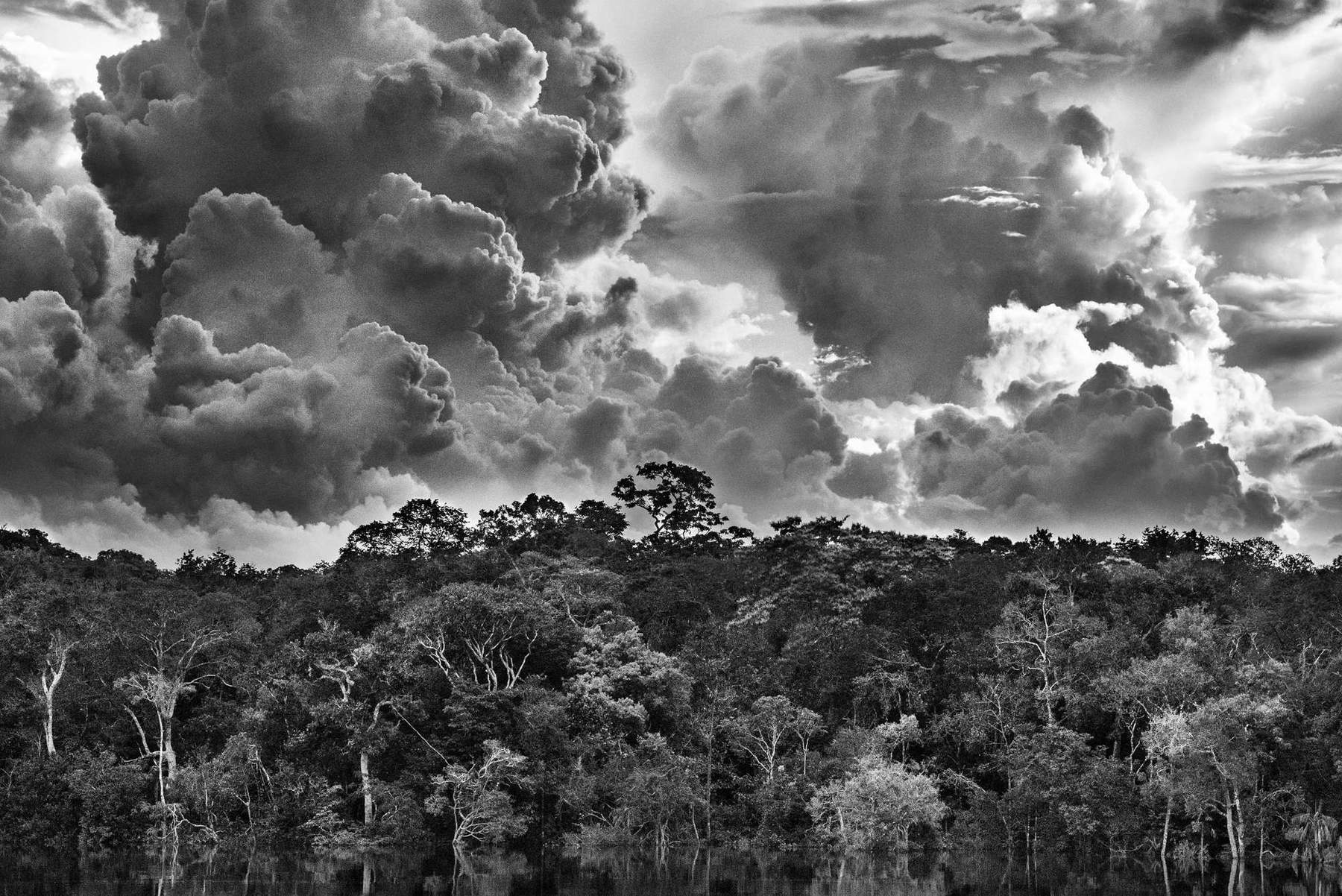In Trieste, Sebastião Salgado takes us to the Amazon with a 200-photo exhibition
After the successful stops in Rome and Milan, Sebastião Salgado ’s major exhibition Amazônia is in Trieste, Italy, from February 29, 2024 to October 13, 2024, at the Salone degli Incanti. On display are more than 200 photographs depicting the vegetation, rivers, mountains and people who inhabit the Amazon rainforest: an immersion in the forest, a journey through the cultures of the peoples who inhabit it, a dazzling experience discovering the Amazon. The exhibition is accompanied by the audio track specially composed by French musician Jean-Michel Jarre. Lélia Wanick Salgado, the photographer’s work and life partner, is curator of the exhibition and set design.
“My wish, with all my heart, with all my energy, with all the passion I possess, is that in 50 years this exhibition will not resemble a testimony of a lost world. The Amazon must continue to live-and, always have in its heart, its indigenous inhabitants,” declares Sebastião Salgado.
“In designing ’Amazônia,’ I wanted to create an environment in which the visitor would feel inside the forest, integrated with its exuberant vegetation and the daily life of the indigenous people. My idea was to present these images, accompanied by relevant texts, in such a way as to emphasize the beauty of this nature and its inhabitants, as well as its ecological and human dimensions, all of which are so threatened today and which it is essential to protect and preserve,” says Lélia Wanick Salgado.
With more than 200 photographs on display, the exhibition revolves around two major themes: photographs of landscape settings and photographs of indigenous peoples. Aerial views of the forest - the exhibition offers visitors a sweeping view of immense waterfalls and stormy skies. Flying rivers - The Amazon rainforest is the only place in the world where the air moisture system does not depend on evaporation from the oceans: each tree disperses hundreds of liters of water a day, creating aerial rivers even larger than the Amazon. Torrential rains, clouds, captured dramatically, offer an ever-changing spectacle. Mountains - Brazil also boasts mountain ranges, with peaks shrouded in mist and lower slopes covered by rainforest. Forest - Once called “green hell,” today it is considered a unique natural treasure. Anavilhanas - Islands in the Stream, is an archipelago of between 350 and 450 islands of every imaginable shape that emerge from the dark waters of the Rio Negro.


At the center of the Salone degli Incanti in Trieste, visitors find three enclosures representing indigenous houses called ocas. Overall, these spaces house 100 photographs of the peoples of the Amazon, with some video interviews of indigenous leaders. This part is dedicated to 12 indigenous groups that Salgado immortalized in his many travels: Awa-Guajá, Marubo, Korubo, Waurá, Kamayurá, Kuikuro, Suruwahá, Asháninka, Yawanawá, Yanomami, Macuxi and Zo’é.
The exhibition itinerary is accompanied by an immersive audio track specially commissioned for the Amazônia exhibition by Jean-Michel Jarre that brings to life the sounds of the rainforest. With a veritable symphony of the world composed of the sounds of the forest - the rustling of trees, the cries of animals, the songs of birds or the roar of water gushing from mountaintops - the exhibition also aims to restore the voices and songs of the indigenous people, all from the sound archives of the Museum of Ethnography in Geneva.
Enriching the display of Amazônia at the Salone degli Incanti in Trieste are two rooms dedicated to projections: one shows the forest landscape, whose images flow accompanied by the sound of the symphonic poem Erosão, a work by Brazilian composer Heitor Villa-Lobos (1887-1959); the other displays portraits of indigenous women and men with music specially composed by Brazilian musician Rodolfo Stroeter in the background. Inside the ocas, on the other hand, there are video interviews with some indigenous peoples’ leaders, who tell about the Amazon from their point of view, the difficulties they have faced in making their voices heard within the framework of national policies, and the importance of the forest to them.
Sebastião Salgado’s exhibition Amazônia aims to tell the story of the Amazon ecosystem, providing much information about its biodiversity and the cultural richness of its inhabitants, representing a monumental work of dissemination as well as of great artistic value. The exhibition is in continuity with the Salgado couple’s commitment to the preservation of the forest’s natural environment through community-relevant initiatives such as theInstituto Terra. The exhibit also features the Amazônia Touch initiative, the first photographic volume conceived and designed for the blind and visually impaired. Thanks to Lélia and Sebastião Salgado’s partnership with the Visio Foundation, an institution that promotes the inclusion of the visually impaired in cultural activities, a book offering access to photographs of the Amazon rainforest and its indigenous communities through tactile images made on brass plates is available to visitors at the Hall of Enchantments. Twenty-one acrylic resin and natural mineral plates allow visitors to experience tactile reading.
In the words of Sebastião Salgado: “This exhibition aims to recreate the environment of the Amazon rainforest, which I have lived, documented and photographed for seven years, giving the visitor the opportunity to identify with and immerse himself in both its lush vegetation and the everyday life of the native peoples. It is the responsibility of every single human being on the planet to take part in protecting this immense heritage that is in danger of disappearing, so that life and nature can escape further episodes of destruction and depredation.”
For all information, you can visit the event’s official website.
Pictured: Yawanawá Indiana. Acre State, Brazil (2016) © Sebastião Salgado/Contrasto
 |
| In Trieste, Sebastião Salgado takes us to the Amazon with a 200-photo exhibition |
Warning: the translation into English of the original Italian article was created using automatic tools. We undertake to review all articles, but we do not guarantee the total absence of inaccuracies in the translation due to the program. You can find the original by clicking on the ITA button. If you find any mistake,please contact us.




























